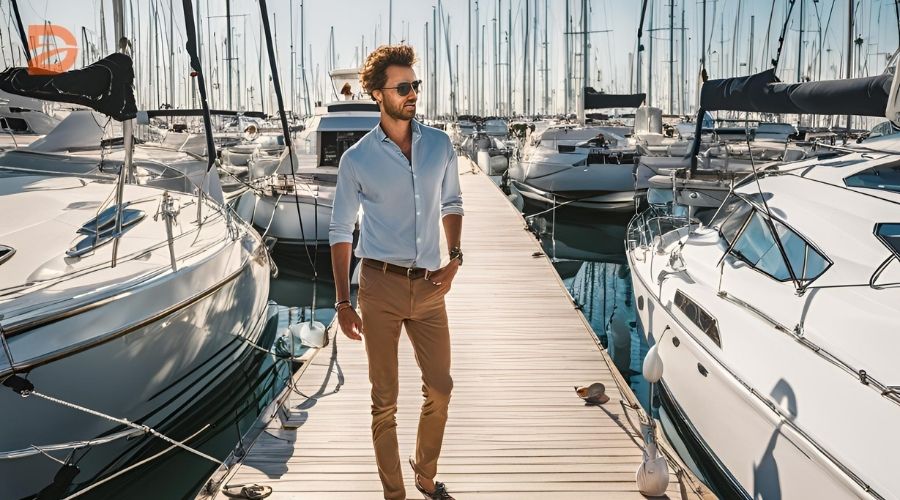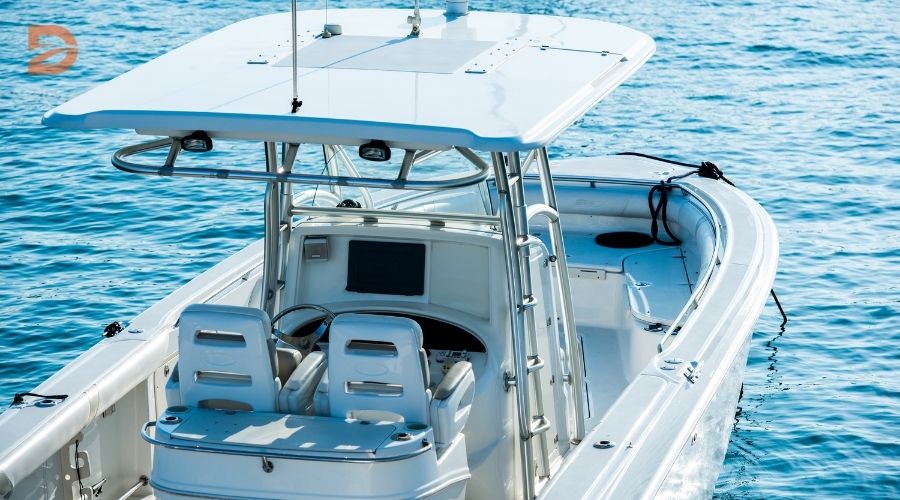Are you ready to embark on the ultimate boating adventure? Whether you’re eyeing a sleek speedboat or a cozy cruiser, navigating the world of first-time boat ownership can be both exhilarating and daunting. But fear not, this comprehensive guide is here to set you up for success on the water.
From understanding the different boat types and sizes to exploring financing options and tackling maintenance, we’ve got you covered. By the time you’re done reading, you’ll be equipped with the knowledge to make an informed decision and dive into the boating lifestyle with confidence.
Key Takeaways:
- Determine the ideal boat size and type to match your needs and budget
- Understand the additional costs of boat ownership, from insurance to storage
- Explore financing options, including the benefits of purchasing a pre-owned boat
- Learn how to work with dealers and prepare for the delivery and first-year maintenance
- Discover the importance of boating safety and education courses
Determine the Boat Type and Size
When buying your first boat, it’s essential to consider how you plan to use it. Will it be primarily for fishing, cruising, watersports, or a mix of activities? The type and size of the boat should match your needs and lifestyle. Key factors to weigh include the number of people you’ll regularly have onboard, towing requirements, the body of water you’ll be using it on, and storage options.
Boat Types and Sizes
There are various boat types to choose from, each with its own set of features and capabilities:
- Bass boats are typically designed for freshwater fishing, ranging from 17′ to 35′ in length and holding 6-10 passengers.
- Bowrider boats usually range from 17′ to 35′ and can accommodate 6-10 passengers, with open seating areas for water sports.
- Center console boats are convenient for offshore sport fishing and can generally reach lengths of 30 feet and above.
- Cruisers, also known as cabin cruisers, usually range from 30 feet to 45 feet in length and offer onboard accommodations like kitchens and bathrooms.
- Deck boats are typically between 20 and 32 feet in length and are ideal for swimming, water sports, and cruising.
- Pontoon boats range from 15 to 30 feet in length and are popular for leisure boating, often referred to as party boats.
- Ski boats are designed for water skiing activities and typically have inboard engines and V-shaped hulls.
- Yachts are luxurious vessels commonly around 36 feet with 2 or more diesel engines for leisure and travel purposes.
Larger boats may offer more amenities but require bigger tow vehicles and costlier storage. Striking the right balance between size, features, and your budget is crucial for first-time buyers.
“The type and size of the boat should match your needs and lifestyle.”
Set Your Budget and Explore Financing
Establishing a realistic boat budget is an essential first step in your boat ownership journey. While new boats offer the convenience of a warranty, they often come at a premium price. Considering a pre-owned model can be a smart way to stretch your dollars further. Regardless of the boat’s condition, be sure to account for not just the initial sticker price but also the ongoing costs of boat ownership, such as insurance, maintenance, storage, and accessories.
To determine your ideal boat financing plan, explore various loan options and utilize online calculators to understand the monthly payments that fit your financial situation. Leaving room in your budget for a reserve fund is also wise, as unexpected expenses can pop up with boat ownership.
Costs of Boat Ownership
In addition to the initial purchase price, boat ownership comes with a range of ongoing that should be carefully considered. These include:
- Insurance premiums – Typically starting around $200 per year in northern states
- Maintenance and repairs – Annual costs for modern family powerboats and personal watercraft can include engine maintenance, oil and filter changes, fuel filter replacements, gearcase lubricant changes, and propeller inspections
- Storage and dockage fees – Costs can vary significantly based on location and amenities
- Fuel expenses – Dependent on the boat’s size, engine, and usage patterns
- Accessories and upgrades – Items like navigational technology, sound systems, and personal watercraft can add to the budget
By carefully considering all these factors and leaving room for unexpected expenses, you can develop a comprehensive boat budget that sets you up for a rewarding and financially responsible boat ownership experience.
First-time boat buyer: Start Shopping and Work with Dealers
The boat shopping journey begins once you’ve determined the ideal boat type, size, and budget. Start by researching models online, but don’t rely solely on the internet. Talking to experienced boaters and working with reputable boat dealers can provide invaluable insights that will guide your decision-making.
When you’ve narrowed down your options, it’s time to see and test the boats in person. Arrange for a thorough boat inspection and sea trials to assess the condition and performance of the vessels you’re considering. A marine surveyor can also provide an expert evaluation if needed. This hands-on experience will help you make an informed decision.
The dealer relationship is key in the boat shopping process. A trustworthy boat dealer can guide you through the purchase and provide support even after you take delivery of your new boat. They can offer valuable advice, ensure you get the best value for your money, and help navigate the various steps of boat ownership.
| Boat Type | Typical Price Range | Key Considerations |
|---|---|---|
| Small Boats (under 20 ft) | $10,000 – $20,000 | Suitable for beginners, modest horsepower |
| Bass Boats | $20,000 – $50,000 | More power for fishing |
| Cabin Cruisers | $50,000 – $100,000 | Comfort and long-distance travel |
| Luxury Yachts (over 12 m) | $100,000 – $1,000,000+ | Premium amenities and features |
Remember, the boat shopping process requires patience, research, and a willingness to work with experienced boat dealers. By taking the time to thoroughly inspect and test the boats, you’ll be better equipped to find the perfect vessel that suits your needs and budget.
Close the Deal and Prepare for Ownership
Closing the boat purchase process involves more than just the sticker price. Work closely with the dealer to understand all the associated costs, from registration and insurance to accessories and storage. Get a clear explanation of the boat delivery process and plan for a comprehensive walkthrough of the boat’s systems before taking possession.
Delivery and First-Year Maintenance
In the first year of boat ownership, be prepared to perform routine maintenance like oil changes and winterization. Enrolling in a boater education course can also boost your confidence and safety on the water. With the right preparation, you’ll be ready to enjoy the boating lifestyle to the fullest.
| Maintenance Task | Frequency |
|---|---|
| Oil Change | Annually |
| Winterization | Annually |
| Hull Cleaning | Bi-annually |
| Battery Replacement | Every 2-3 Years |
Proper boat maintenance is crucial for ensuring a safe and enjoyable boating experience. By staying on top of routine tasks like oil changes and winterization, you can extend the life of your vessel and avoid costly repairs down the line. Additionally, regular cleaning and battery replacement will help keep your boat in peak condition.
“The best way to learn about boat maintenance is to take a boater education course. These classes cover essential topics like engine care, safety equipment, and navigation rules.”
Whether you’re a first-time boat buyer or an experienced captain, investing in your education and staying proactive with maintenance will pay dividends in the long run. With the right preparation, you’ll be ready to embark on countless adventures on the water.
Conclusion
Buying your first boat is an exciting milestone, but it’s important to approach it with careful planning and research. By determining the ideal vessel for your, setting a realistic budget, working with reputable dealers, and preparing for ownership, you can set sail with confidence. This guide has provided a roadmap for first-time boat buyers to navigate the process successfully and fully embrace the rewarding boating lifestyle.
Remember, boat ownership comes with ongoing financial commitments, from maintenance costs to storage and insurance fees. It’s crucial to factor in all the expenses beyond the initial purchase price to ensure you’re prepared for the responsibilities of boat ownership. With the right approach and a solid understanding of the market, you can find the perfect boat that fits your needs and budget, and enjoy the freedom and adventure that comes with being a boat owner.
Whether you’re drawn to the thrill of water sports, the peaceful tranquility of cruising, or the convenience of having your own vessel, the boating lifestyle offers countless opportunities for fun and relaxation. By taking the time to research, plan, and work with experienced professionals, you can embark on your boating journey with confidence and create lasting memories on the open water.
FAQ
What factors should I consider when choosing the right boat type and size?
Consider how you plan to use the boat, the number of people you’ll regularly have onboard, towing requirements, the body of water you’ll be using it on, and storage options. Strike a balance between size, features, and your budget.
What are the key costs to account for when buying a boat?
Beyond the sticker price, be sure to factor in ongoing costs like insurance, maintenance, storage, and accessories. Explore boat loan options and use online calculators to understand the monthly payments that fit your financial situation.
How can I find the right boat dealer and ensure a smooth purchasing process?
Research models online, then visit dealers to see and test the boats in person. Talk to experienced boaters and work with a reputable dealer who can provide guidance through the purchase process and support even after you take delivery.
What should I expect when taking delivery of my new boat?
Closing the deal involves more than just the sticker price. Work with the dealer to understand all the associated costs, get a clear explanation of the delivery process, and plan for a comprehensive walkthrough of the boat’s systems before taking possession.
How do I prepare for the first year of boat ownership?
Be prepared to perform routine maintenance like oil changes and winterization. Enrolling in a boater education course can also boost your confidence and safety on the water.











